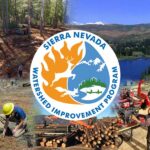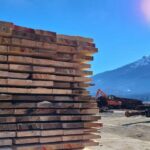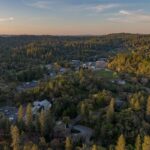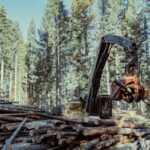Rural communities in California’s Sierra-Cascade region face a unique set of challenges. Many struggle with economic diversification and job creation as opportunities associated with mining and timber production have declined. Tourism, recreation, and working landscapes remain the foundation of local economies. In this context, we have seen the devastation that a large, damaging wildfire can wreak on the citizens, communities, and natural resources of the region. Economically, many Sierra-Cascade communities are ill equipped to deal with the loss of business, infrastructure, and other major disruptions these events create.
To bring the region to holistic health, local communities must be empowered to address urgent needs, plan for the future, and envision new tools and partnerships. Investments in emerging infrastructure and workforce development programs around sustainable forest management, including a distributed network of biomass energy production facilities co-located with wood products campuses, are particularly promising.
Highlights From Our Newsroom
View our most recent articles related to economic recovery.

Leaders, scientists discuss wildfire recovery at WIP Summit

2022 WIP Summit: Strategies for Wildfire Recovery

New sawmill to help Greenville rebuild, recover from Dixie Fire

Governor’s California Comeback Plan includes Sierra Nevada wildfire resilience

SNC launches Biomass Utilization Fund

The 2021 WIP Summit: Building the Restoration Economy in the Sierra Nevada
Regional Challenges, State Priorities
Forests in California's Sierra-Cascade region are unhealthy, vulnerable to damaging wildfires and an accelerating climate crisis. Local communities and economies are at risk. And it’s not just the Sierra-Cascade, California’s water security, outdoor access, biodiversity, and climate leadership all depend upon healthy, resilient forests.
Learn more about these challenges and priorities:

